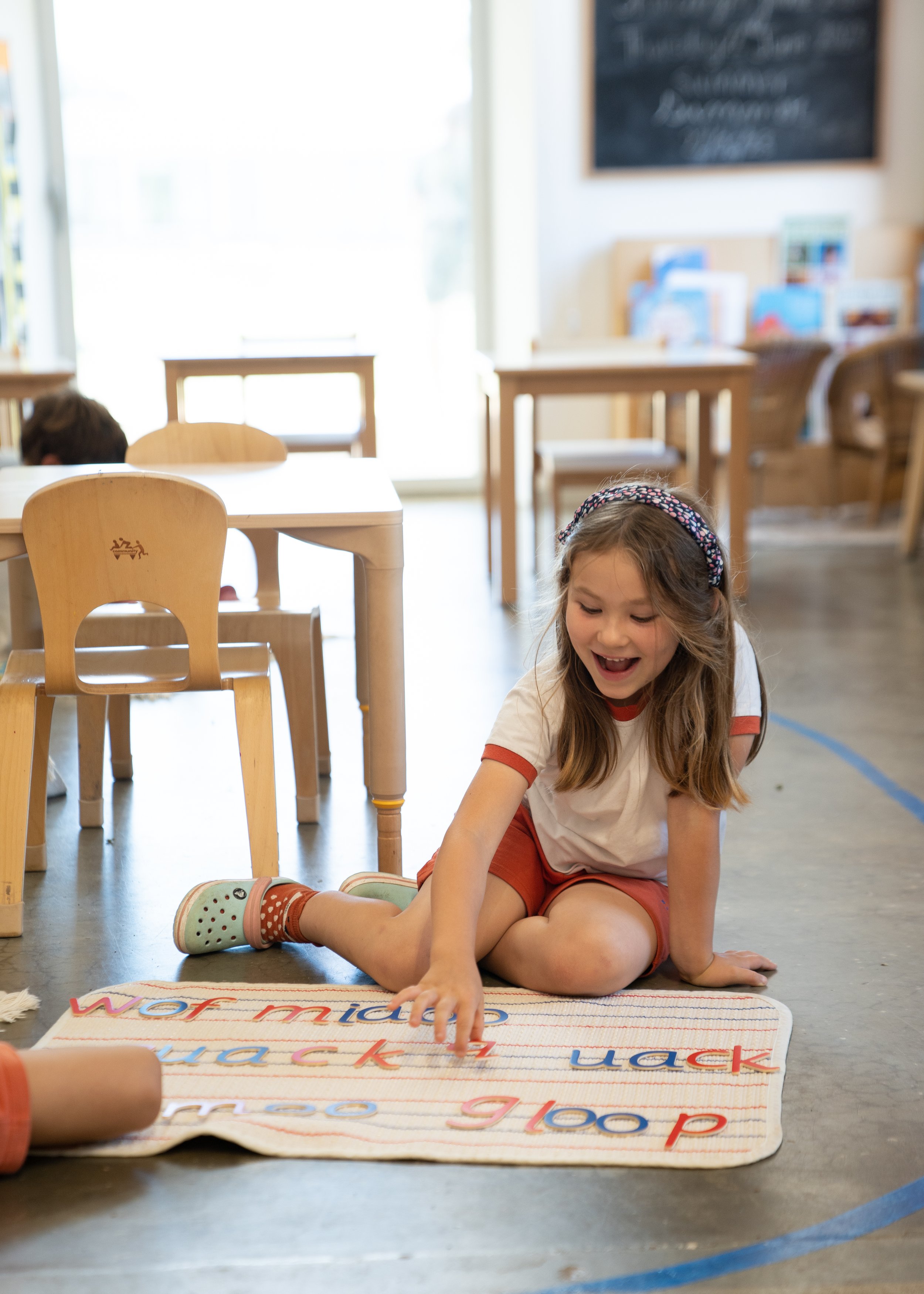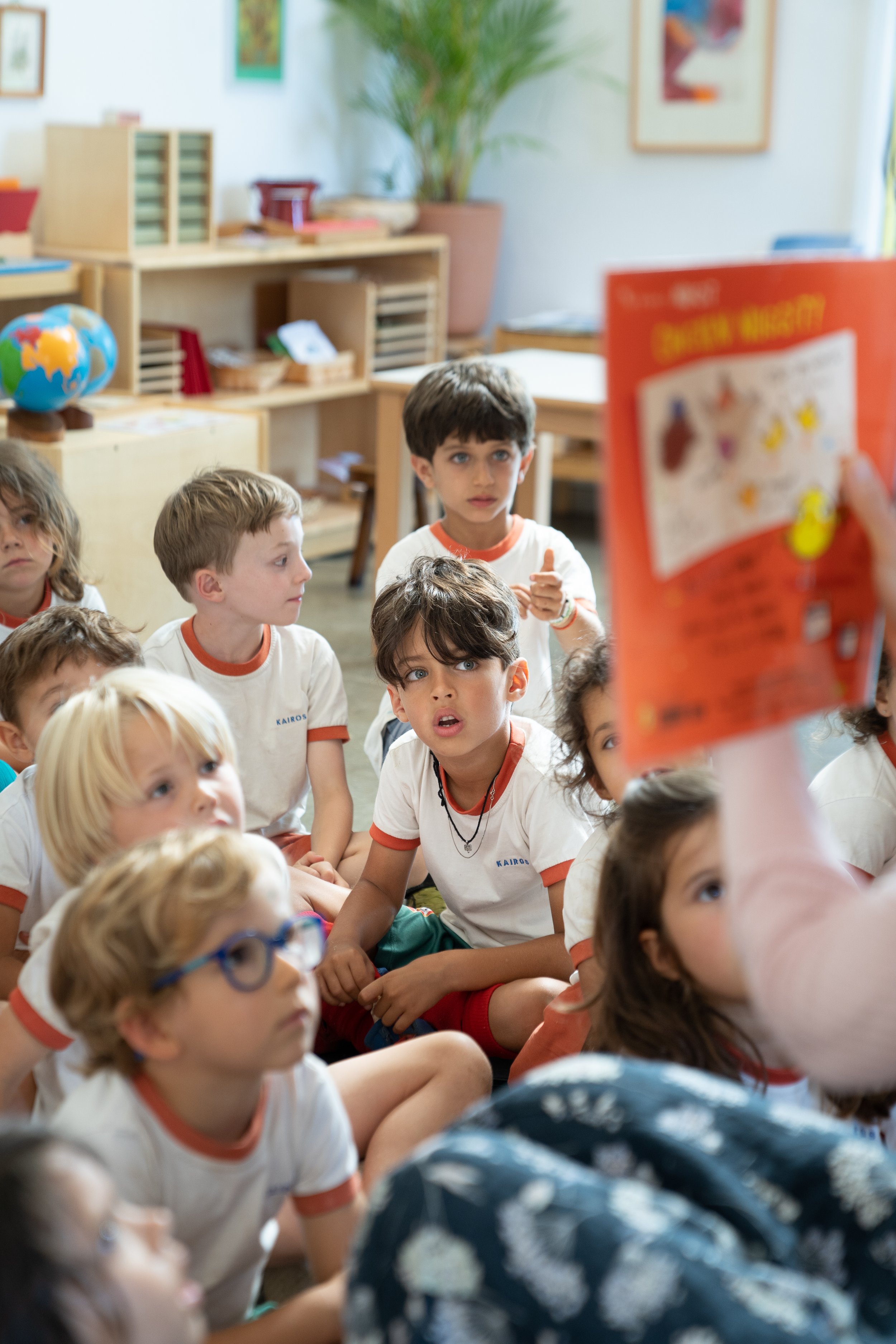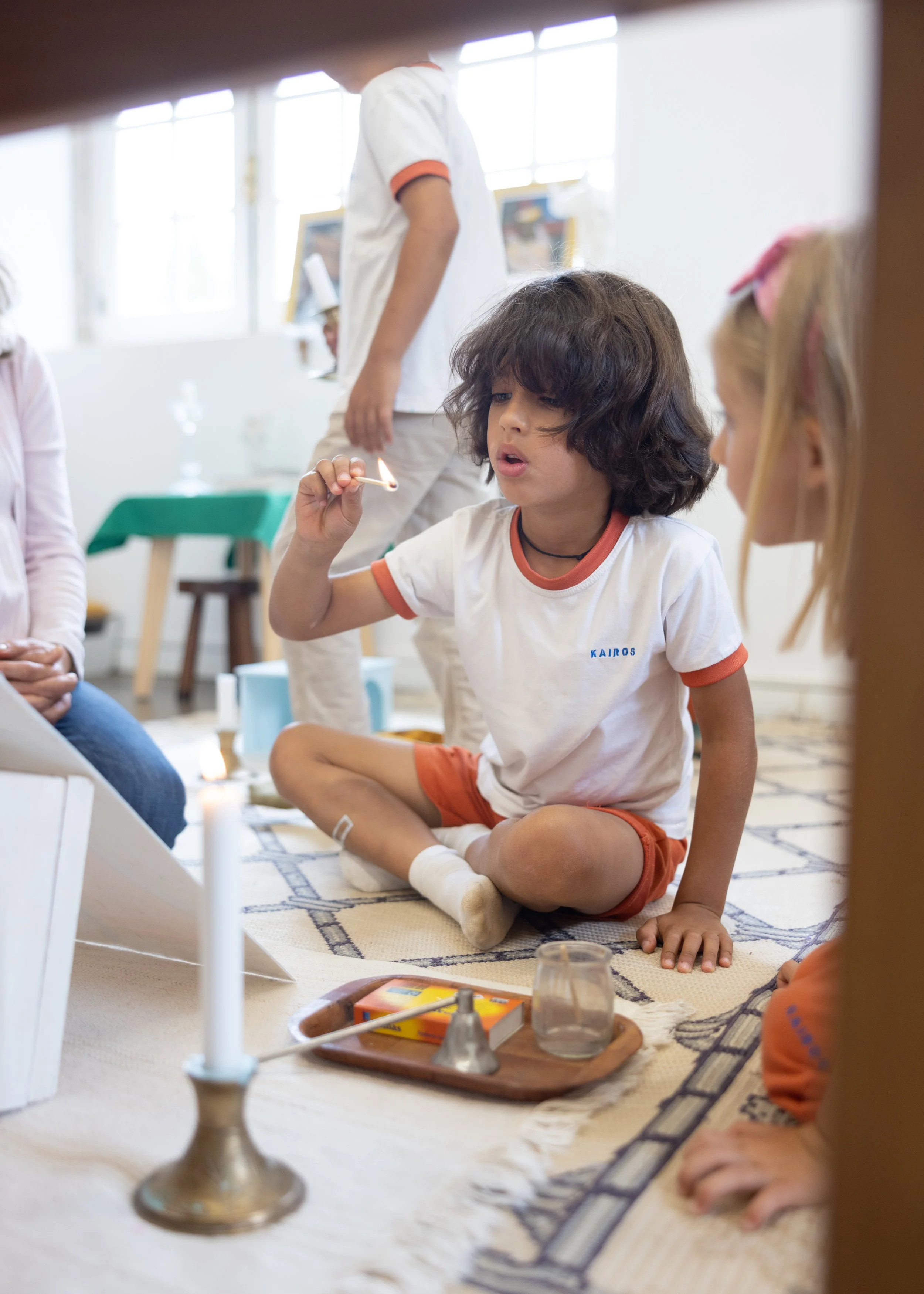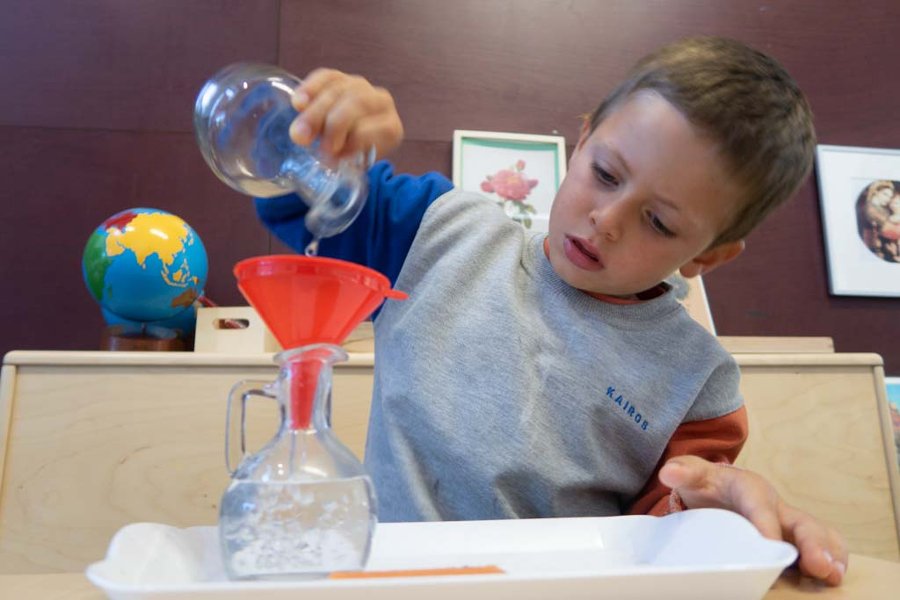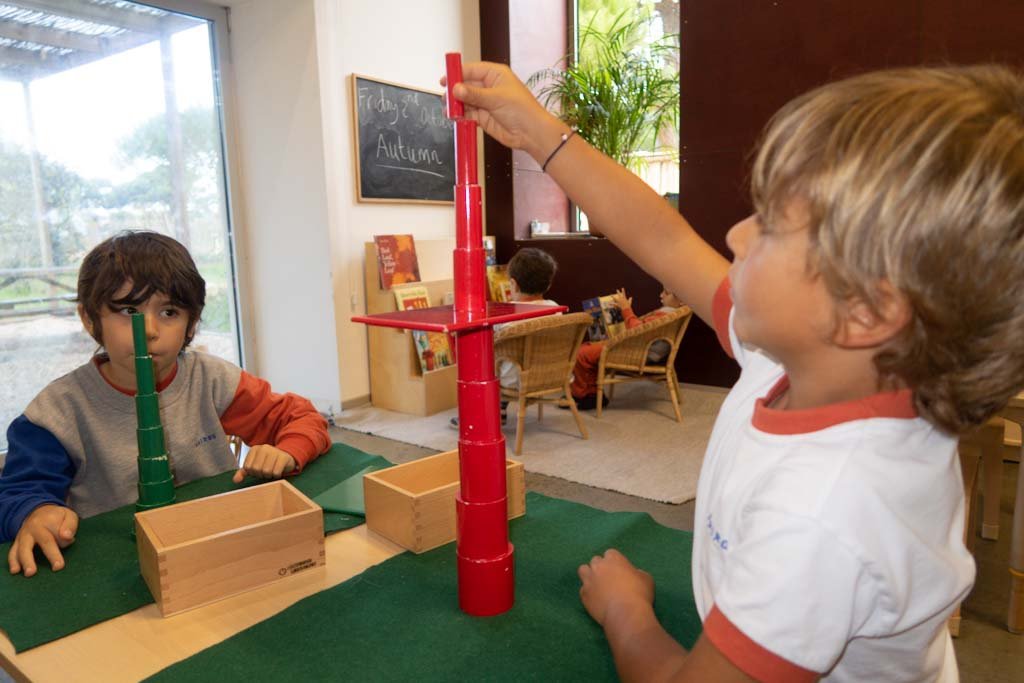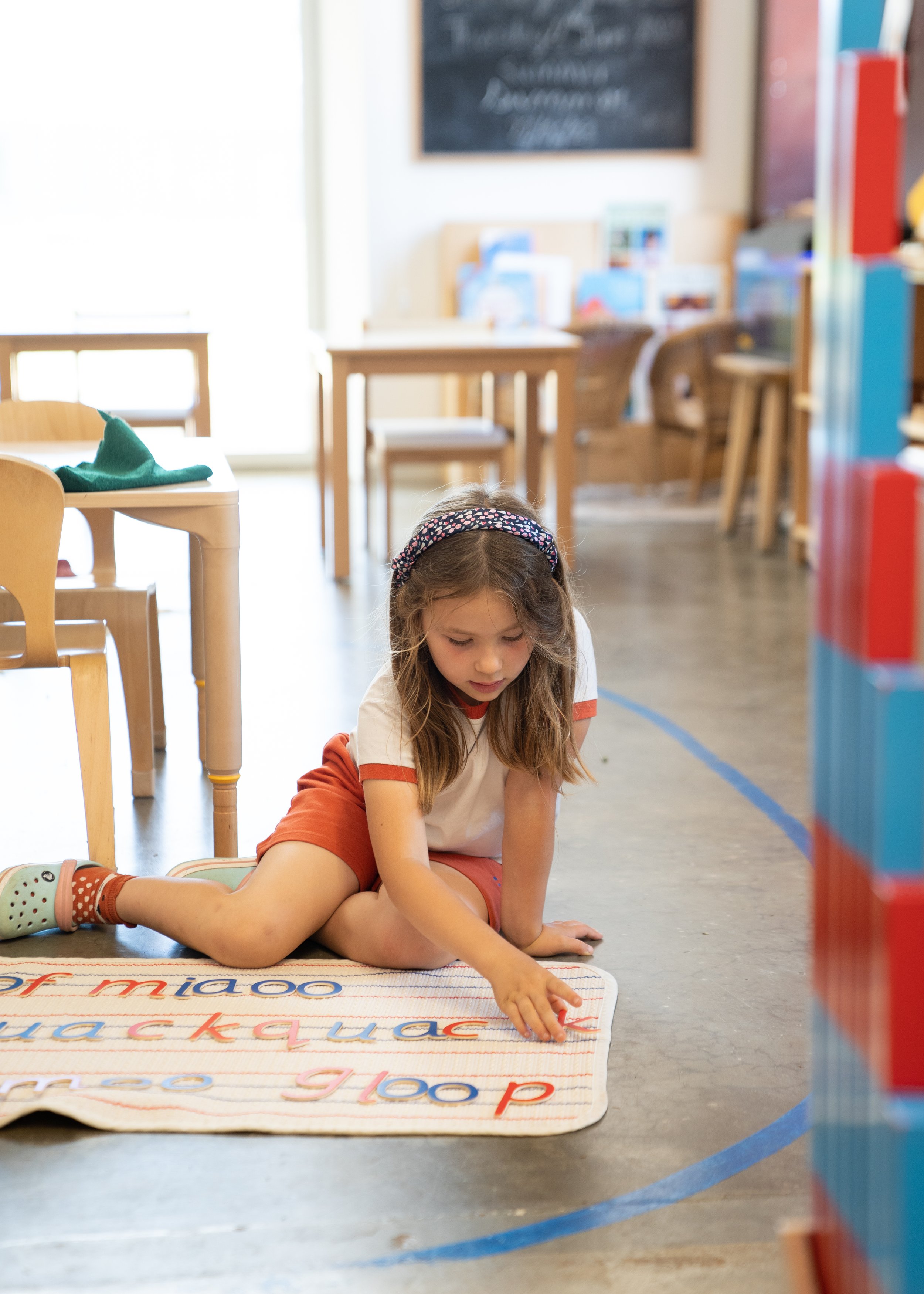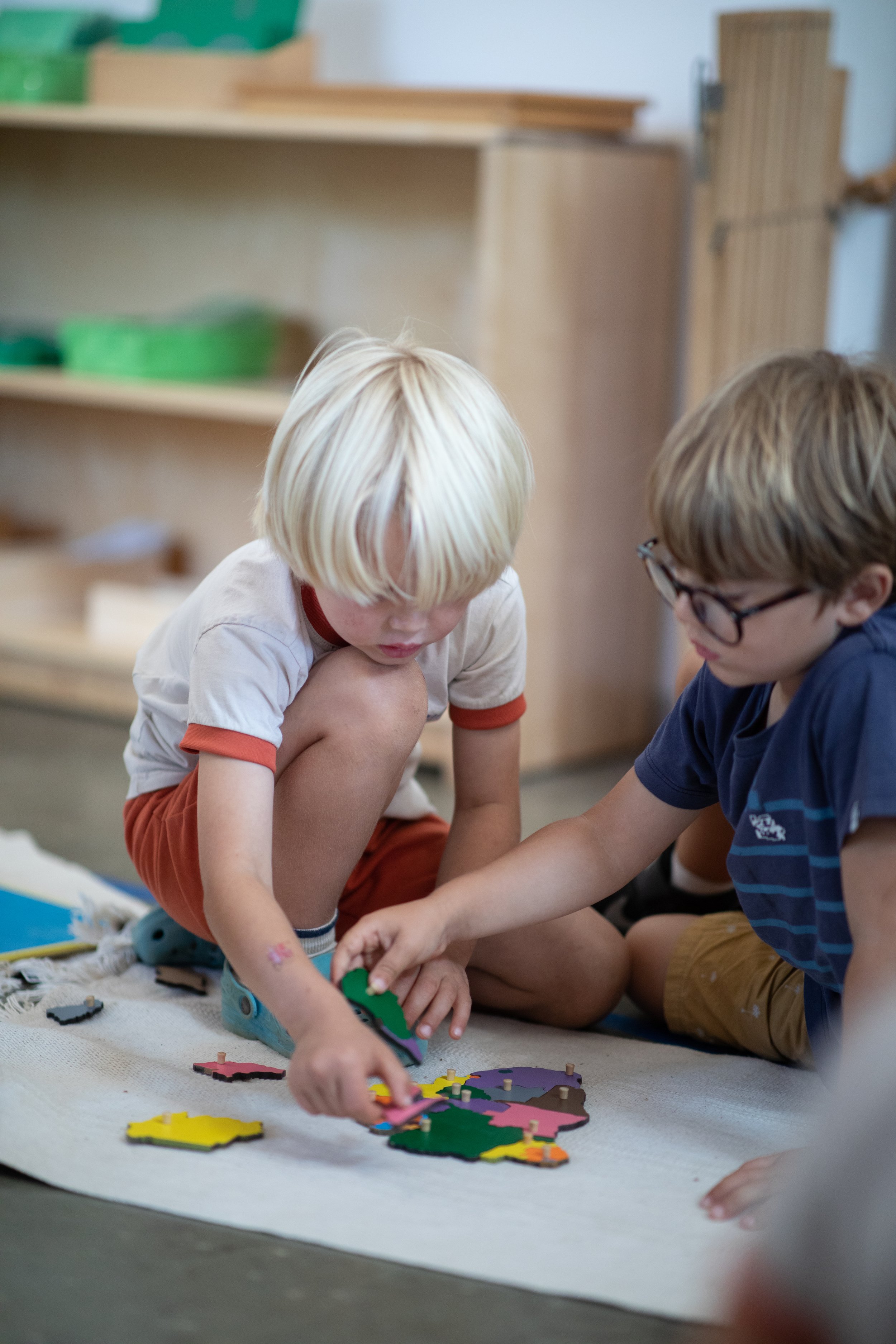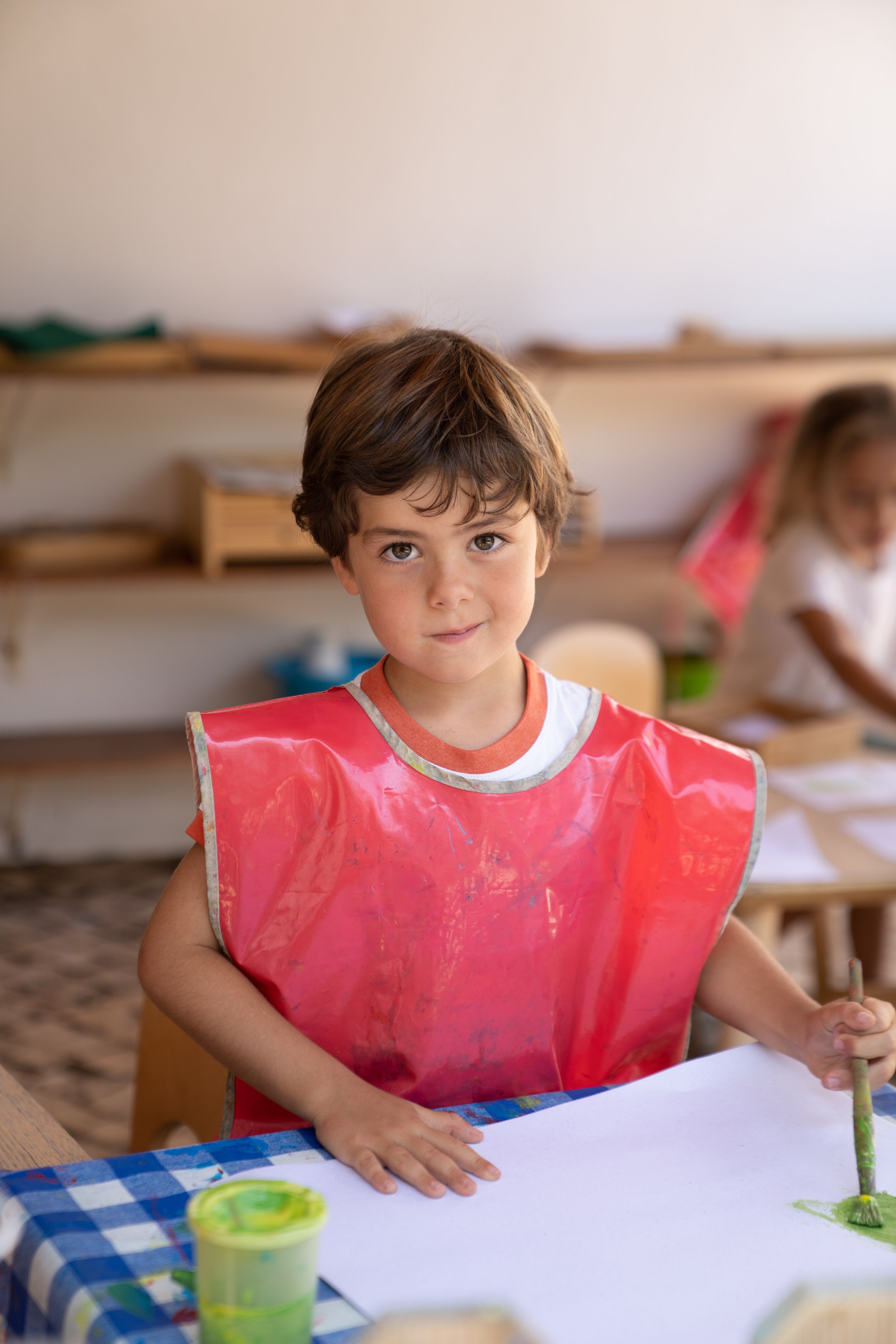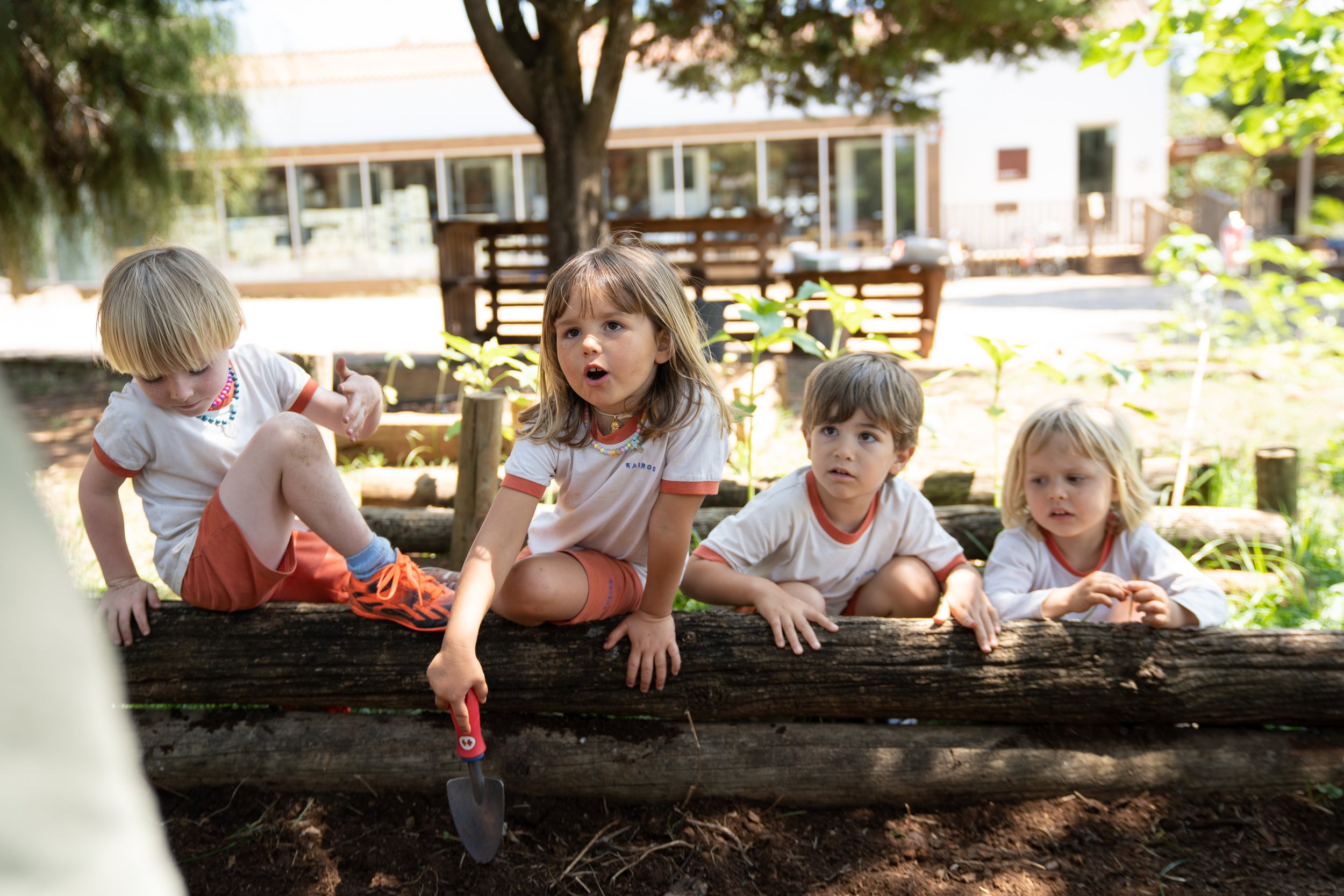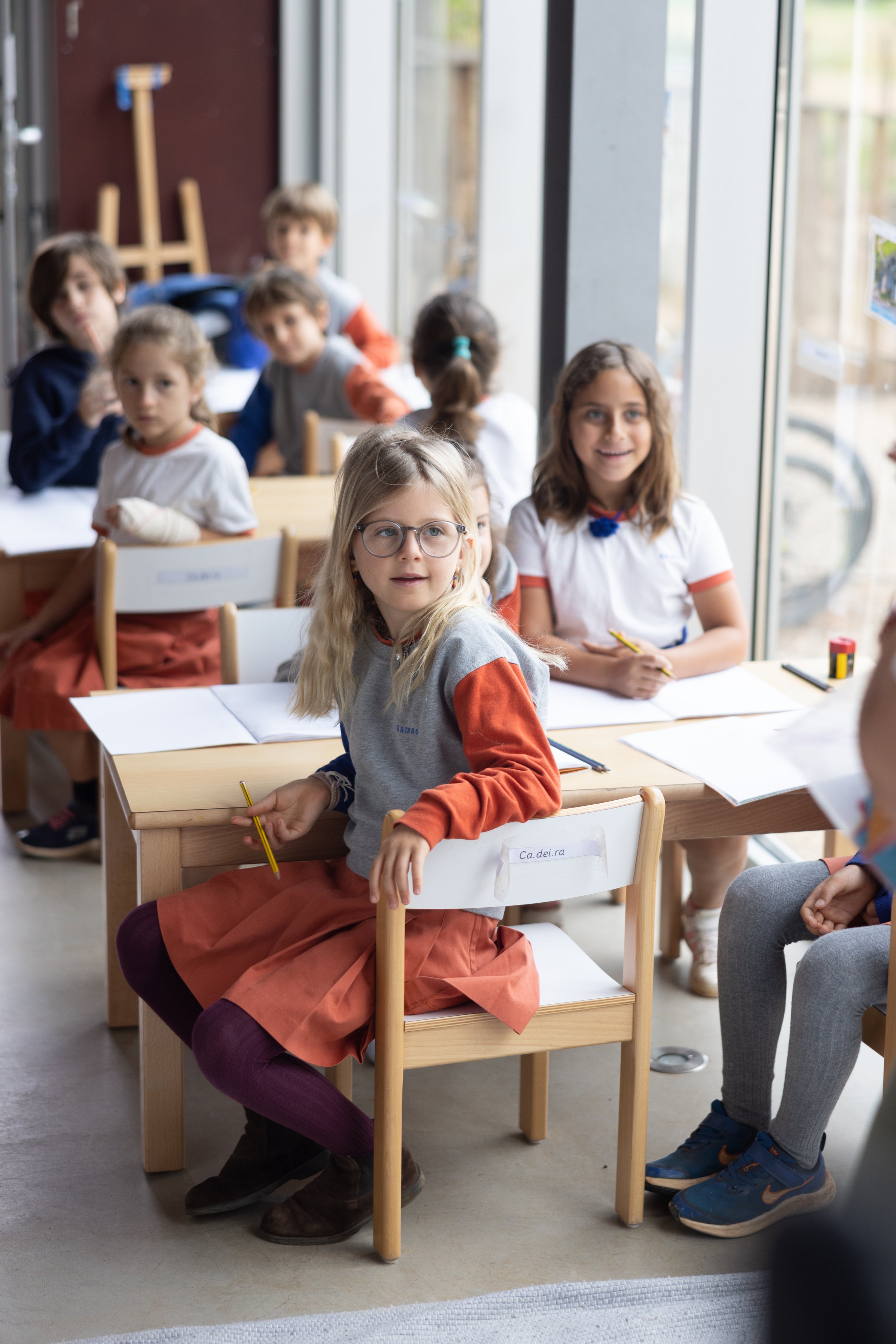
Early Years
Maria Montessori called her schools "Casa dei Bambini" or "Children's House." In their home away from home, our youngest students find areas full of mystery, challenge and discovery. They retain the freedom to choose their own work and may repeat an activity as often as they wish, which contributes to their self-confidence and independence. The teacher will introduce them to new activities and ideas but will never coerce them into areas they are not ready for. Each child has targets that are appropriate to his or her individual stage of learning.
Kairos is a Cambridge International School and employs the Cambridge International Curriculum.
The Classroom
The Montessori Primary prepared environment balances the child’s developing imagination and powers of abstraction with down-to-earth, concrete, hands-on materials. Each material has its structured sequences designed to lead to discovery and understanding. The Kairos Children’s House has a capacity of 40 children ranging from ages 3–6. The classroom is equipped with toilets and sinks and has large doors that connect to the exterior for both work and play. Meals are also eaten within the classroom space and both setting the tables and cleaning up is done by the classroom community.
Practical Life: Skills of Daily Living
Equipped with child-sized tools that really work, the young child is able to perform the same activities as adults: scrubbing, pouring, sweeping, polishing, gardening. These practical life exercises provide a crucial link between home and school. While care of the house and body are necessary chores for the adult, the young child is attracted to these activities for very different reasons. They are meaningful, creative, filled with intricate movements and achievements that hold the child’s attention.
Sensorial: Exploring the World
By age three, children have absorbed a myriad of sensory impressions from their world. Now the child’s developmental task is to give order to these impressions, to classify and describe them. The Montessori sensorial materials enable children to clarify, classify and comprehend the physical world.
Maths: From Concrete to Abstract
Montessori maths materials are carefully designed tools that lead the child from concrete to abstract understanding of mathematical concepts. Children manipulate a variety of rods, spindles, cards, beads, cubes and counters that symbolize mathematical abstractions. Children do not merely learn to count, they are also able to visualize the whole structure of our numeration system. They perform the operations of addition, subtraction, multiplication and division with concrete materials. Children are also presented with opportunities for fact memorization at a young age when combinations like “3 + 2 = 5” offer a real fascination and can be absorbed readily. The math materials are sequenced so that mathematical discovery will progress smoothly.
Language: From Spoken to Written
The Montessori language curriculum enables the child to develop both the receptive (listening and reading) and the expressive (speaking and writing) dimensions of language. Throughout the entire Montessori environment, the child hears and uses precise vocabulary for all the activities, learning the names of textures, geometric shapes, composers, plants, mathematical operations and so on. The materials for written language begin by introducing the child to the sounds and symbols of the alphabet. Later, the child uses a moveable alphabet to compose words, sentences and whole stories. From this, the child develops the ability to read. Language work is integrated with explorations in religion, science, geography and culture.
Phonics
Phonics is a reading method that allows a child to learn the sounds of letters by developing an understanding of how these sounds are used individually, in groups and whole words. Learning phonics provides an excellent way for children to have fun and get engaged in what they are learning. Rather than following the conventional method of teaching from A to Z, we divide the letters into manageable groups so that a child can start using the letters to begin making words right from the beginning. If a child can implement what they are learning immediately, it generates more interest and excitement.
Geography and Science: Bringing the World into the Children’s House
Maps, flags, booklets, models, songs, foods, photographs, cards: a variety of appealing materials answer the many questions the older Children’s house child has about the world, and stimulates many more. Where do we live? What makes climactic zones hot or cold? Why do people around the world dress and look different? How did people live in the past? How did they meet their daily needs for dress, housing, transportation and food? What are the names of the continents, the countries, the oceans, the animals, plants, rocks and minerals? The Montessori experience leads the child to knowledge and appreciation of the world and its human family, with all their rich variety.
Art and Music: Integrated into the Life of the Classroom
Activities and materials for art and music are part of the child’s day-to-day classroom work. Children express themselves artistically with a variety of media, such as crayons, chalk, pencils, paint, clay, textiles and various papers. Musical experiences include singing, dancing and moving to rhythms. Music and art are also explored culturally as they connect to historical periods and geographical places. Drawing a flag, dancing a folk dance, or listening to a work by a great composer can be part of the exploration of a country.
Working Outdoors: Expanding the Classroom Boundaries
While children sometimes experience nature inside the classroom by tending to our plants and pets, our aim is that they explore the beautiful surrounding nature that we have at school. They will go for weekly nature walks and explorations and have daily outdoor play.
Portuguese
Kairos is keen to ensure that children have a strong appreciation and understanding of Portuguese culture, history and language. The Portuguese Classes for the Children’s House students are a moment where the children learn new vocabulary and have the opportunity to delve deeper into the Portuguese language and culture through stories, music, and rhymes.

